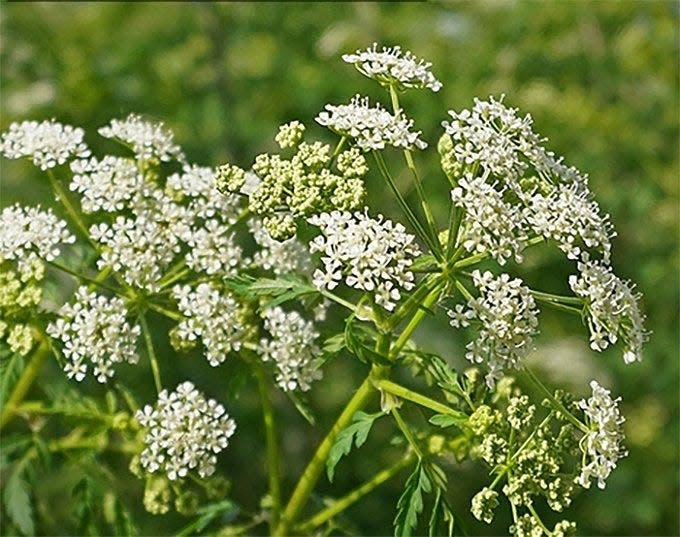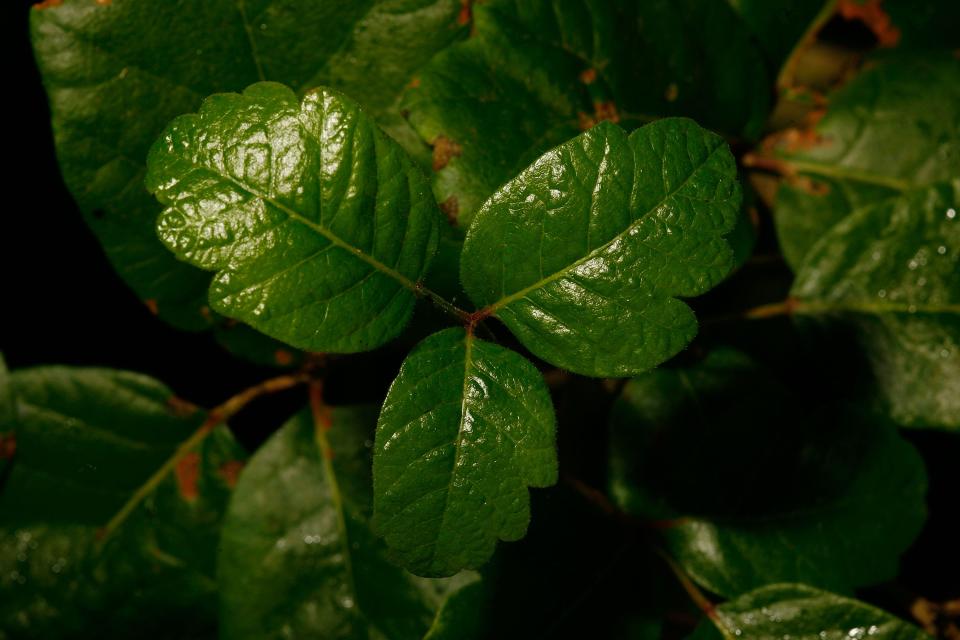What is poison hemlock? What to know about this pretty but deadly plant growing in Oklahoma
With springtime in full bloom, both beautiful flowers and unwanted weeds are sprouting up all around Oklahoma.
While most weeds are harmless, there are several plants in Oklahoma known to cause problems.
Here's what you need to know about some of the more common plants to avoid, like poison hemlock, poison ivy and poison oak.
Poison hemlock in Oklahoma

Easily confused with other white flowering plants, poison hemlock is one of the most toxic plants found in the state, according to the Oklahoma State University Extension.
Poison hemlock has umbrella-shaped clusters of white flowers with fern-like leaves. Distinguishing features include its height - six to 10 feet tall - and that they have red spotting on the stem.
Every part of a poison hemlock plant is poisonous — the seeds, root, stem, leaves and fruit — according to the Cleveland Clinic. It can be fatal if ingested, with symptoms ranging from vomiting to seizures to respiratory failure, and there is no antidote for the poisoning.
Even just touching the plant can make a human sick, and an animal could die from ingesting less than 500 grams of the plant.
To remove poison hemlock, the plants must be dug up, being careful not to touch it on your skin. The entire long taproot should be dug up, and plant parts should be disposed of as they remain poisonous even after dried.
Poison ivy in Oklahoma
Poison ivy can be found in abundance in most parts of Oklahoma, but is less common in the southwest and the panhandle.
The leaves are usually found in three leaflets and can be smooth, lobed or pointed. The leaves change from a shiny green to a dull green as summer progresses, and in the fall the leaves turn scarlet or yellow.
Poison ivy leaves contain an oily sap called urushiol that causes most people to break out into a rash. If you do break out, try not to scratch it as this can cause infection.
According to the Mayo Clinic, poison ivy rash can be treated at home with cortisone cream, calamine lotion, cool compresses and a cool bath with baking soda or an oatmeal-based product in it. You can also take Benadryl for the itching and to help you sleep better.
Poison oak in Oklahoma

Poison oak is also usually found in clusters of three leaflets, and the leaves are lobed or pointed with rounder edges, according to the OSU Extension office.
The leaves stay green throughout the summer and turn yellow with brown undertones in the fall.
Because poison oak rash is caused by the same sap as poison ivy, the treatment is the same.
Poison oak and ivy can be mowed down but they will resprout. According to the Extension office, herbicides are the only effective way to get rid of the plants. Glyphosate and triclopyr are two common herbicides that will work.
This article originally appeared on Oklahoman: Poison hemlock in Oklahoma: What to know about the deadly plant

